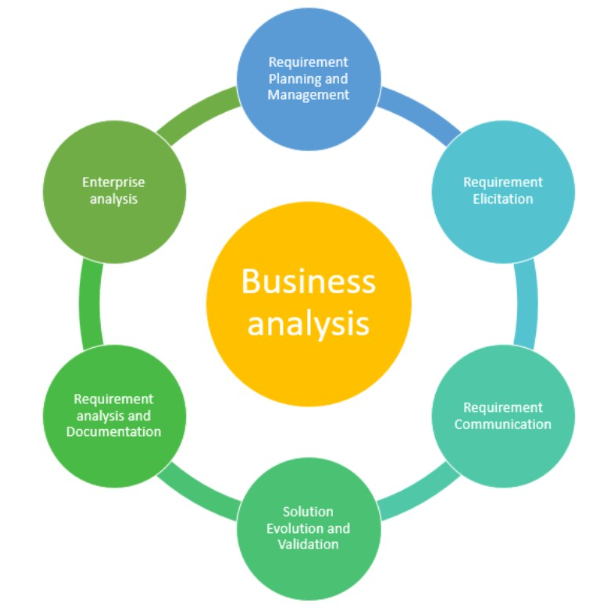Introduction
Power Query is a data connection technology that enables users to discover, connect, combine, and refine data across a wide variety of sources. It is integrated into several Microsoft products, including Excel and Power BI. Power Query provides a user-friendly interface for data transformation, making it an essential tool for business analysts. Any business analysis course at the intermediate or advanced level will cover this technology in detail while an entry level course often introduces learners to this technology.
Key Features of Power Query
Following are the key features of power query.
Data Connectivity: Power Query can connect to a wide range of data sources, including databases (SQL Server, Oracle, and so on.), web pages, Excel files, CSV files, and more. This makes it easy to import data from various systems and platforms.
Data Transformation: Power Query provides a powerful set of tools for data cleaning and transformation. Users can filter rows, remove duplicates, pivot and unpivot data, split columns, merge tables, and perform many other transformations without needing to write code.
User-Friendly Interface: The Power Query Editor offers an intuitive, graphical interface for performing data transformations. This allows users to visually build their data preparation workflows, making it accessible to those without a programming background.
Repeatable Processes: Once a data transformation workflow is defined in Power Query, it can be saved and reused. This ensures consistency and efficiency, as the same steps can be applied to updated data sets without needing to manually repeat the transformations.
Integration with Excel and Power BI: In Excel, Power Query allows users to create data models that can be used for analysis, reporting, and visualisation. In Power BI, it is used to prepare and load data into the data model, making it ready for interactive dashboards and reports.
Uses of Power Query in Business Analysis
Some uses of power query that are gaining ground in strategizing business processes are related here. These are crucial steps in data analysis and often need to be performed by business analysts. If you are a business analyst, enrol for a business analysis course that includes power query and its applications in the following areas of data analysis.
Data Preparation: Business analysts often need to prepare data from various sources for analysis. Power Query helps in consolidating and cleaning data, ensuring it is in the right format for further analysis.
Data Transformation: Analysts can use Power Query to perform complex data transformations without writing code. This includes reshaping data, combining multiple data sets, and applying business logic to create meaningful datasets.
Data Integration: Power Query makes it easy to integrate data from different sources, enabling a comprehensive view of business data. This is crucial for creating reports and dashboards that provide insights across various business functions.
Automated Data Refresh: Power Query workflows can be set up to automatically refresh data, ensuring that reports and analyses are always up-to-date with the latest information.
Data Exploration: Analysts can use Power Query to explore and understand data before performing detailed analysis. This includes profiling data to identify patterns, anomalies, and trends.
Enhanced Reporting: By transforming and preparing data in Power Query, analysts can create more accurate and insightful reports in Excel or Power BI. This helps in making informed business decisions based on reliable data.
Example of Using Power Query
An inclusive business analyst course will include hands-on project assignments that will equip learners to use power query in real-world scenarios. The following is an example of the usage of power query.
Imagine a business analyst needs to prepare a monthly sales report. The sales data is stored in multiple CSV files, each representing a different region. Using Power Query, the analyst can:
- Connect to each CSV file and load the data.
- Combine the data from all regions into a single table.
- Transform the data by removing unnecessary columns, filtering for the current month, and adding calculated columns for metrics like total sales and average sales per transaction.
- Load the cleaned and transformed data into Excel or Power BI for further analysis and visualisation.
Conclusion
In summary, Power Query is a powerful tool for business analysts, enabling efficient data preparation, transformation, and integration. It streamlines the data analysis process, allowing analysts to focus on deriving insights and making data-driven decisions. If you are a business professional and are yet to learn this technology, it is recommended that you enrol for a business analyst course that covers this technology as it will prove to be a potent upskilling option.
Business name: ExcelR- Data Science, Data Analytics, Business Analytics Course Training Mumbai
Address: 304, 3rd Floor, Pratibha Building. Three Petrol pump, Lal Bahadur Shastri Rd, opposite Manas Tower, Pakhdi, Thane West, Thane, Maharashtra 400602
Phone: 09108238354
Email: [email protected]

